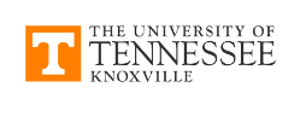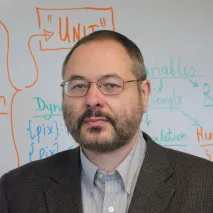Dysoc/NIMBioS Webinar Series on Cultural Evolution
Subscribe to be notified when new videos are posted
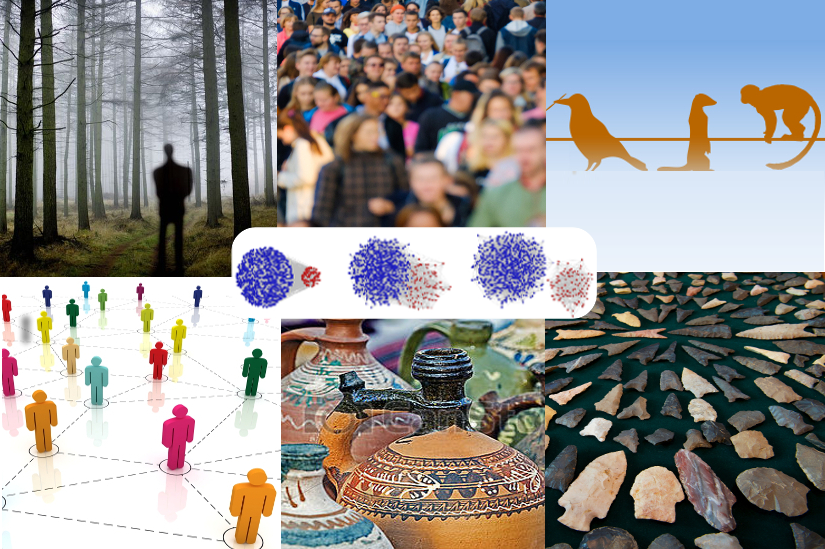 The Center for the Dynamics of Social Complexity and the National Institute for Mathematical and Biological Synthesis
are happy to announce a series of free webinars on cultural evolution.
The Center for the Dynamics of Social Complexity and the National Institute for Mathematical and Biological Synthesis
are happy to announce a series of free webinars on cultural evolution.
This series is one of the outputs of a grant "Dynamic Models for Basic Theory and Applications in Cultural Evolution" funded by the John Templeton Foundation (PIs Sergey Gavrilets and Peter J. Richerson) aiming to promote the Cultural Evolution Society. The grant has supported the development of online teaching modules on cultural evolution. Five modules have been completed and are currently available at http://www.dysoc.org/cesmodules. The modules were selected after an international competition organized by the CES Working Group for Education and Outreach composed of Drs. Louise Barrett (University of Lethbridge), Sergey Gavrilets (UT Knoxvlle), Russel Genet (California Polytechnic State University), Patricia Izar (University of San Paolo), Luke Matthews (RAND Corporation), and Peter J. Richerson (UC Davis).
The webinar series includes live presentations by lead designers of the five completed modules, an opening lecture by the first President of the CES and the lead PI on the proposal Peter J. Richerson (UC Davis), and a lecture by CES Working Group member Patricia Izar (University of San Paolo).
There are also invited lectures by Drs. Peter Turchin (Complexity Hub Science Vienna) and Ruth Mace (University College London). Besides running their research programs, Drs. Turchin and Mace are the founding editors of two important journals in the field of cultural evolution: Cliodynamics: The Journal of Quantitative History and Cultural Evolution and Evolutionary Human Sciences, respectively.
Moderator: Sergey Gavrilets (Ecology & Evolutionary Biology and Mathematics, DySoC Director, NIMBioS Associate Director for Scientific Activities, University of Tennessee)
Watch recorded webinars online:
![]()
- Outreach for the Cultural Evolution Society: Everybody needs to know a little bit about cultural evolution with Peter J. Richerson
- How to teach modeling, or Thoughts on a pedagogy for cultural evolution, with Paul E. Smaldino
- The discovery and reach of animal cultures, with Andrew Whiten
- Cognitive biases in folklore: From fairy tales to fake news, with Joseph Stubbersfield
- Cultural evolution in the field, with Adrian Viliami Bell
- Modeling the dynamics of cultural diversification, with Bernard Koch and Erik Gjesfjeld
- Cultural macroevolution: Understanding the rise of large-scale complex societies in human history, with Peter Turchin
- The behavioural ecology of religious beliefs and practices, with Ruth Mace
- The Impact of a tradition on the life of capuchin monkeys, with Patricia Izar
About the CES Learning Modules. Without the aid of mathematical models, human intuitions about dynamic systems of any complexity can be quite faulty. These online modules present many basic and applied issues in cultural evolution and introduce students to methods of dynamical systems theory as applied to the evolution of human systems. The module materials have been developed with self-guided study in mind, using a variety of online learning methods that allow students to work independently to gain both a theoretical understanding of the concepts and practical experience with modeling techniques. The modules could serve as a basis for intensive short courses, seminars, or as components of a regular quarter or semester course. It is our hope that they will facilitate interdisciplinary conversations and collaborations.
Webinars
Outreach for the Cultural Evolution Society: Everybody needs to know a little bit about cultural evolution
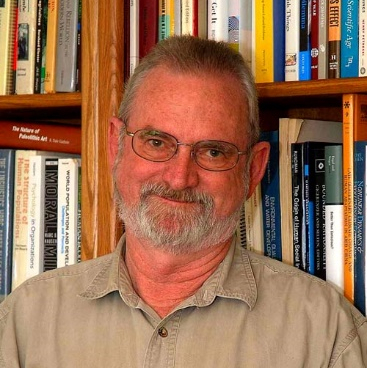 Date: 11:45 a.m. EDT Tuesday, September 29, 2020
Date: 11:45 a.m. EDT Tuesday, September 29, 2020
Speaker: Peter J. Richerson (University of California, Davis)
Topic: Outreach for the Cultural Evolution Society: Everybody needs to know a little bit about cultural evolution
Abstract: Biology education has a terrible problem. On the one hand it is a vast discipline webbed into all of natural science and mathematics. Specialization is a must, yet for any given specialty, any other specialty might become relevant. An ecologist might suddenly need to know molecular genetics. The US solution is to teach high school and 1st year college students a little bit about all of biology before they specialize. Practicing ecologists don't really have a working knowledge of molecular genetics but if an ecological problem presents itself for which molecular genetics might help, many ecologists will remember enough to head to the internet or down the hall to bone up. Biology is a successful mega-discipline in part because of those comprehensive if necessarily superficial courses. The human sciences, which really should be thought of as a sub-discipline of biology, have no such courses, and hence no good sense of how humans fit into the larger world. Cultural evolution and gene-culture coevolution are topics which illustrate how humans are webbed into the natural world. For example humans make extraordinary use of culture, but we are among a large number of species for which it is important. Human cultural phenomena are intimately connected with the rest of human biology. The physiological imperatives of raising highly altricial young have driven the evolution of our family systems. A mission of the Cultural Evolution Society is to help every biology student, especially every student of humans, know at least a little bit about cultural evolution.
Bio: Peter J. Richerson is Distinguished Professor Emeritus in the Department of Environmental Science and Policy at the University of California, Davis. His research focuses on the processes of cultural evolution. His 1985 book with Robert Boyd, Culture and the Evolutionary Process, applied the mathematical tools used by organic evolutionists to study a number of basic problems in human cultural evolution. His later books with Boyd include Not By Genes Alone: How Culture Transformed Human Evolution, an introduction to cultural evolution aimed at a broad audience and The Origins and Evolution of Cultures, a compendium of their more important papers and book chapters. He has recently co-edited a book Cultural Evolution with Morten Christiansen reporting the results of a Strüngmann Forum. His recent publications used theoretical models to try to understand some of the main events in human evolution, such as the evolution of the advanced capacity for imitation (and hence cumulative cultural evolution) in humans, the origins of tribal and larger scale cooperation, and the origins of agriculture. He and his colleagues also investigate cultural evolution in laboratory microsocieties.
Watch recorded webinar on the CES Modules YouTube channel.
Introduction slides (pdf)Webinar slides (pdf)
Some questions posed by webinar participants (pdf)
- Cultural Evolution and Social Evolution, are these defining the same thing? or What are the differences?
- Could you make a distinction between culture and social learning? It seems to me that social learning is necessary for culture, but not sufficient.
- A Humanology 1 course is such a great idea – how to ovecome the lack of math background (and in many cases aversion to quantitative reasoning) among many humanities/social science students? Related to this, how can this goal overcome the handicap of social science and humanities students that results from a lack of funding and prestige when compared to STEM disciplines?
- How do you define culture in rats and other animals? Is behavior the same thing as culture?
- Please say more about the how and why of Humanology 1, particularly the role of the social sciences and humanities.
- Is culture a "state" and learning a mechanism? And therefore, are they ontologically different and not comparable?
- What are some of the pitfalls in translating the field of cultural evolution to policymakers and the general public? How can we diffuse publicly the idea that we can select for better cultural practices (as DS Wilson has described before)? and can this be done on multiple scales?
- I'm on board with the bemused attitude of contempt towards traditional disciplines, and building more interdisciplinary programs - I was wondering two things:
1) Do you have any ideas that have proven particularly useful on how to sell this idea or operationalize it to get university administrators on board?
2) Do you have any thoughts about how to bring in and incorporate the humanities? - I'm interested in the applied sciences. Do you see practical applications of cultural evolution in dealing with cultural maladaptations?
- Could you say something about the importance of wider public understanding of cultural evolution - what effects it might have and how it might be achieved?
- You mention differential and difference equations. But if cultural evolution takes its cue from biologial evolution, then besides systematics the main methods used are optimization for evolutionary ecology (i.e. re physical environment and other species) and game theory methods for evolutionary socioecology (i.e. other members of the same population). No?
- Cultural evolution theory attempts to understand the evolution of human societies, but how do we overcome the shadow of Social Darwinism?
- For example, humankind created a ball and created and developed lots of games and game culture along with it. So can this whole process be considered to be a cultural evolutionary process?
- How will evolutionary biology work to get rid of human exceptionalism, uniqueness and special creation? Why are there authors who don't bother about human exceptionalism while others are abolitionists, like those working with critical animal studies?
- Where do you see cultural evolution going? What are the new/open questions?
- How are the efforts of the THIRD WAY unifying the humanities and evolutionary biology working to avoid repeating the errors of "social Darwinism" in the past?
- Something I think is important in terms of relations between science and humanities is that the underlying goals are different: in science, we try to work toward a comprehensive theory that is the best possible at the time. In humanities the idea is to continue discussion. There is no unique way to interpret Hamlet, for example.
- Usage of the current terms can be confusing. Which term is more accurate to adopt in publications in the field of biology: humanimal, nonhuman animal, multispecies, or simply humans?
Selected questions are discussed in the Q&A session at the end of the webinar.
How to teach modeling, or Thoughts on a pedagogy for cultural evolution
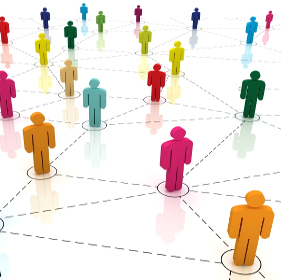 Date: 11:45 a.m. EDT Tuesday, October 6, 2020
Date: 11:45 a.m. EDT Tuesday, October 6, 2020
Speaker: Paul E. Smaldino (Cognitive and Information Sciences, University of California, Merced)
Topic: How to teach modeling, or Thoughts on a pedagogy for cultural evolution
Abstract: The human sciences are fractured. Cultural evolution provides a unifying theoretical framework. Understanding human behavior and social change is hard. Formal models help by disambiguating meaning, specifying assumptions, and making clear qualitative predictions. Currently, there is neither a canonical set of models for understanding social behavior nor a standard way of teaching modeling to social scientists or biologists interested in human behavior. I will describe the 7-lecture tutorial on "Modeling Social Dynamics" in this context. This short course takes an interdisciplinary approach to modeling social behavior, drawing on insights from across the social sciences as well as from evolutionary ecology. I'll give an overview of the course, and comment more generally on how to establish a pedagogy for modeling cultural evolution.
Bio: Paul E. Smaldino is Associate Professor of Cognitive and Information Sciences at the University of California, Merced. An interdisciplinary researcher, he has degrees in physics and psychology, and has held postdoctoral appointments in departments of medicine, anthropology, political science, and computer science. He is known for his work on cultural evolution, on modeling scientific communities, and promoting and teaching formal modeling.
CES Learning Module description: Models of Social Dynamics: An Introductory Module. This module takes an interdisciplinary approach to modeling social behavior, drawing on insights from across the social sciences and evolutionary ecology. It focuses on constructing and analyzing simulations using the NetLogo programming language.
Module designer:
Paul E. Smaldino (Cognitive and Information Sciences, University of California, Merced)
Watch recorded webinar on the CES Modules YouTube channel.
Webinar slides (pdf)
Some questions posed by webinar participants (pdf)
- Where do the arts fit in? Are the arts a form of inquiry that might be listed alongside all of the disciplines on Paul's multidisciplinary cultural evolution slide?
- The problem with cultural evolution for me is to understand its exact defination. For example: humans invented a ball, and they created games that play with the ball. And some of these games survived and others failed. Surviving games help human to be fit, come together, and feel like warriors. And now we have football culture, which we play, watch and spend money for. Is that an example of cultural evolution?
- Are social sciences inexact just by definition or just becuase there is arguably no good formal theory framework available yet to put it to the same level of exact sciences?
- Can't social scientists just partner with a math whiz?
- While more training in math is important for social scientists, a question arises about what sort of math beyond linear algebra, calculus and some dynamical systems? (They already have some training in statistics and probability.)
- Paul, do you have any related materials using R?
- How about Python?
- We used NetLogo to build an agent based model on a small world network to study potential control measures for SARS-COV-2. The three control measures where shelter in place, contact tracing, and mask wearing (Braun et. al. 2020 PlosOne). We didn't program agent based models or network models before this. It is very accessible.
- Hamilton's rule pays a core role in in explaining cooperation in microbes. In human social evolution many of the models developed made by Nowak have a strong opinion against inclusive fitness. Why do you think Hamilton's rule/Inclusive fitness are being so little used in the field of cultural evolution?
- Thoughts about the role of major transitions in evolution? Cooperation in the human species is thought to be one, essentially going from one stable state to another (one adaptive peak to another). The question is how, of course, and whether models can help us confirm or deny.
- What is a social norm? Is it the same as a cultural trait?
- Do you know of any similar course taught in C++?
- Any suggestion for a modeling book to accompany a grad level course (before yours is published)?
- Should we also talk in such a course about connecting models and data (preferably historical data)? That is the aspect I struggle with when teaching these topics. Especially thinking of cultural macro-evolution.
- I have a question for Paul about complexity theory and computational social sciences (CSS) as an alternative educational or methodological strategy to evolutionary theory and modeling to understand cultural evolution. Complexity theory focuses on non-linear systems with emergent properties. Complex adaptive systems "adapt" at near-chaos conditions and give rise to new emergent properties. CSS can measure big quantities of data and analyze through a holistic perspective which assumes that the observed phenomena are "emergent" (i.e. more than the sum of their parts). Are human socieities such phenomena? In other words, are most social processes phenomena emergent? Regardless, couldn't social phenomena (emergent or otherwise) be better understood through the reductionist study of individual motivations, especially if (individual motivations for) cooperation is the bedrock of human behavior?
- What is the difference between social and cultural evolution?
- What is your view of Dan Sperber's approach in terms of cultural attractors, and models based on that approach?
- You should do it in Julia, Paul! As julia people advertise; as intuitive than python, but faster, which might be useful at some point in the future for more complex ABM models.
- Perhaps a sub-unit about wotking in teams?
- So, "you have to know and understand each other's skills" is part of the art of assembling a team?
- Is it only social science that is inexact? Aren't even the ecological sciences and soil sciences or even aquatic sciences also inexact sciences? Any sciences about systems that involve biotic systems are inevitably inexact science, at the population level at least. What do you think Paul, about only social sciences being called the inexact sciences?
- How to advocate for the importance and use of cultural evolution in public policies?
- I've always thought the difference between the 'hard' sciences and the social sciences is that with the hard sciences we start from some physical thing that anyone born with a standard set of senses can agree exists. With the social sciences everything we study is imagined. We all interpret each others behaviour all the time. So really what are known as the hard sciences ought to be called the easy sciences.
- Did I miss a discussion on whether cultural evolution = social evolution? Are they the same thing?
Selected questions are discussed in the Q&A session at the end of the webinar.
The discovery and reach of animal cultures
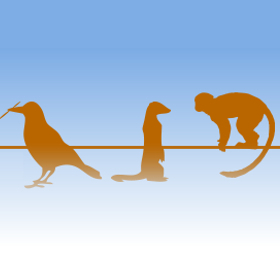
Date: 11:45 a.m. EDT Tuesday, October 13, 2020
Speaker: Andrew Whiten (University of St Andrews, UK)
Topic: The discovery and reach of animal cultures
Abstract: Culture was once thought a unique human attribute, but research in recent decades has revealed that social learning, traditions and culture are surprisingly widely distributed in the animal world. Research on these topics has particularly blossomed in the present century, producing a flurry of exciting new discoveries in species as diverse as primates, whales, birds, fish and even insects. In this lecture I offer a brief historical overview of how the field has developed to discover an undreamt-of richness in animal cultures, and I will highlight some of the most recent and fascinating findings. Implications of the discovery of animal cultures include their relevance for understanding the origins of our own distinctive cultural natures, extensions to the scope of evolutionary biology, and enhancement of efforts to conserve endangered species.
Bio: Andrew Whiten is Emeritus Wardlaw Professor of Evolutionary and Developmental Psychology at the University of St Andrews, UK. He is an elected Fellow of both the Royal Society of Edinburgh and the British Academy. His research interests span the ontogenetic development and evolution of social learning and culture, studied particularly in children and non-human primates, the latter both in the wild and in captive, experimental contexts. In recent years he has endeavoured to collate key findings illuminating the reach of cultural phenomena more widely in the animal kingdom, across behavioural domains and throughout animals' lifetimes.
Whiten, A. (2017) A second inheritance system: The extension of biology through culture. Royal Society Interface Focus 7, 20160142.
Whiten, A. (2017). Social learning and culture in child and chimpanzee. Annual Review of Psychology, 68, 129-154.
Whiten, A. & van de Waal, E. (2017). Social learning, culture and the ‘socio-cultural brain’ of human and non-human primates. Neuroscience and Bio-behavioral Reviews (special issue, ‘Primate social cognition’) 82, 58-75.
Whiten, A, Ayala, F. J., Feldman, M. W. & Laland, K. N. (2017). The extension of biology through culture. Proceedings of the National Academy of Sciences of the USA 114, 7775-7781.
Whiten, A. & van de Waal, E. (2018). The pervasive role of social learning in primate lifetime development. Behavioral Ecology and Sociobiology. (special issue, 'An evolutionary perspective on the development of primate sociality') 72, 80.
Whiten, A. (2018). Social, Machiavellian and cultural cognition: A golden age of discovery in comparative and evolutionary psychology (themed section, Marking Machiavellian Intelligence: Contemporary comparative perspectives on cognitive and cultural evolution). J. Comp. Psychol. 132, 437-441.
Whiten, A. (2019). Conformity and over-imitation: an integrative review of variant forms of hyper-reliance on social learning. Advances in the Study of Behavior, 51, 31-75.
Whiten, A. (2019). Cultural evolution in animals. Annual Review of Ecology, Evolution and Systematics, 50, 27-58.
CES Learning Module description:
Animal Cultures: Core Discoveries and New Horizons.
This module offers an overview of core discoveries and new developments in the study of animal cultures. The significance of animal culture for evolutionary biology and ecology, understanding human cultural evolution, and conservation are highlighted.
Module designers:
Andrew Whiten (University of St Andrews, UK)
Lucy Aplin (Max Planck Institute for Animal Behaviour, Germany)
Nicolas Claidière (CNRS, Aix-Marseille University, France)
Rachel Kendal (University of Durham, UK)
Watch recorded webinar on the CES Modules YouTube channel.
Webinar slides (pdf)
Some questions posed by webinar participants (pdf)
- Do the traditions come in "packages" or are each of them independent from the others? Is there a concept that reflects this measure?
- Does in-group/out-group play any role in chimp inter-group cultural diffusion (rather than just learning opportunities)? What is your sense of the current evidence concerning whether or not non-human animal culture includes social norms, i.e. rules that are stabilized by enforcement (including crucially, third party punishment)?
- What is your response to the argument by Hill (in Laland et al 2009, "Question of Animal Culture") that the bar for using the term "culture" needs to be set not just at social learning, but also require the existence of norms & ritual, namely (a) valued expectations of behavior whereby social groups adjust evolutionary payoffs by cultural means, and (b) symbolic performances that reinforce them? On this account, unless and until norms and symbolic performances are present, we could talk about "animal traditions" rather than "culture".
- Alternatively, from the POV of cultural anthropology, one would reserve "culture" for social learning which relies on symbol systems employing arbitrary signs, such as language. Arbitrary symbol systems can easily refer to phenomena not immediately present (displacement), communicate about abstractions, and be used to generate new signs and combinations of signs with relative ease (productivity). As such, they could be expected to facilitate & co-evolve with cumulative cultural evolution. What, if any, research has there been in this direction?
- Would the horizontal spread of cultural traditions occur so readily in the wild, where chimps do a lot of their foraging separately, than in research facilities? Do you think most chimp culture is spread vertically - from mothers to offspring?
- I'm curious what you think of the "zone of latent solutions" hypothesis, that animals often have the prerequisite behavioral topographies in their behavioral repertoire, and that social transmission facilitates the use of these repertoires in a new situation? i.e., the behavior isn't being directly transmitted socially, but it's something else about social groups that lets behaviors spread?
- Given the evidence of culture in primates as well as Neanderthals, what do you think of the argument that our species really took off through a major transition in cooperation? In this account, our form of cumulative cultural evolution is contingent upon new "sociological" arrangements (i.e. Boehm's "reverse dominance" hypotheses). Survival of the Friendliest by Brian Hare and Vanessa Woods also points to self-domestication as the key distinguishing force between us and other hominum species.
- The main difference between human and non-human culture seems to be the cumulative nature of the first. What could be the reason for that? Or is there cumulative culture among non-human animals as well?
- One issue here seems to be how culture is defined. Is it only social learning and the transmission of behavior, or is there something else involve, more even than cumulative culture, that perhaps depends on things like the psychological capacities of individuals (such as the recognition of self as both a distinct identity and simultaneously a member of a social group)?
- What is your sense of the current evidence concerning whether or not non-human animal culture includes social norms, i.e. rules that are stabilized by enforcement (including crucially, third party punishment)?
- Can we have a word why 'peering' as discussed in Schuppli & van Shaik 2019 is insufficient for social learning on your view?
- Given that culture is exceptionally advantageous in response to rapid environmental change, should we expect an explotion of animal cultures with the spread of anthropogenic climate change?
- The concept of transmission seems to be used in two ways, to describe radiation, and to describe "heredity" in cultural evolution (animals and humans). But transmission of a cultural innovation doesn't seem to explain the creation of the innovation in the first place. How do you see the innovations occurring in the first place?
- What do you think is the most basic mechanism for social learning? Mirror neurons and pattern habituation?
- Andy, you jump from endothermic vertebrates 'down' to fishes. But what about reptiles (and even dinosaurs) and their role in the evolution of culture, since social learning has been demonstrated in several species of nonavian reptiles?
- How could model-based social learning affect the formation or maintenance of traditions?
- Two days ago, Tennie et al. published 'The zone of latent solutions [ZLS] and its relevance to understanding ape cultures.' Since the ZLS is becoming increasingly prominent in the literture and gains followers, what would you say will be its role in future research in the field?
- Should we take "social learning" to be a basic/single psychological mechanism, or would it be fruitful to distinguish between different forms of social learning?
Selected questions are discussed in the Q&A session at the end of the webinar.
Additional responses from Andrew Whiten (pdf)
Cognitive biases in folklore: From fairy tales to fake news
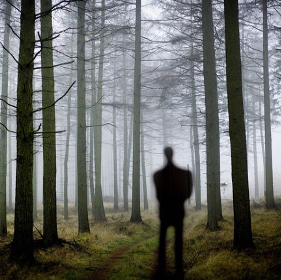
Date: 11:45 a.m. EDT Tuesday, October 20, 2020
Speaker: Joseph Stubbersfield (Psychology, Heriot-Watt University, Edinburgh, UK)
Topic: Cognitive biases in folklore: From fairy tales to fake news
Abstract: Storytelling and narratives have played a vital part of human culture for millennia, and throughout this time stories have evolved shaped by the selection pressures of human minds and societies. Research on the cultural evolution of narratives has flourished over the past few decades, identifying and testing these selection pressures to better understand this evolution. In this webinar I focus on how cognitive biases for certain types of information content influence the social transmission and cultural evolution of a range of folklore narratives, from traditional tales, such as Red Riding Hood to, to more contemporary tales such as the urban legend of Bloody Mary and Fake News.
CES Learning Module description: The Neverending Story: Cultural Evolution and Narratives. This module explores the universal and uniquely human behavior of narrative and how cultural evolution theory has provided vital insights into the transmission and evolution of narratives and why some become culturally successful.
Module designers:
Joseph Stubbersfield (Psychology, Heriot-Watt University, Edinburgh, UK)
Jamie Tehrani (Anthropology, Durham University, Durham, UK)
Oleg Sobchuk (Max Planck Institute the Science of Human History, Jena, Germany
)
Watch recorded webinar on the CES Modules YouTube channel.
Webinar slides (pdf)
Some questions posed by webinar participants (pdf)
- Why can you view fake news as folk tales? How are they different?
- What factors in a tale (its structure, internal relations, etc.) give it the power to possess a mind by tying into basic biological instincts?
- To what extent would dream experiences be factors in MCI bias?
- Do horror stories fall under the same category as folktales? The source of fear is often culturally specific.
- What are the effects of emotions in content biases? Specifically, can we say something about specific emotions or types of emotions?
- I’m curious if you know of any work on how such content biases have been exploited historically by groups with certain political goals? e.g., current disinformation campaigns aimed at creating discord? Does this work offer any suggestions about how societies can arm themselves against such campaigns?
- How about a "cautionary tale" bias?
- Can minimally counterintuitive bias also be based on pre-existing cultural references? So whether a narrative lives or dies depends on how well they resonate with existing cultural concepts, references, etc. If so, how do you factor that in?
- So, when we talk about folktales, conspiracy theories and fake news, they all have different affordances to the humans partaking in the discussion in terms of the direct effect it has on their lives. Folktales are more abstract, conspiracy theories are more about real things around us but not necessarily affecting us and fake news has the possibility of direct impact on our lives. Does this play a role in the cognitive biases associated with each?
- How can those cognitive "content based" biases be related to the "cultural-fitness" of a cultural artifact? It sounds like they could be the measure of the ultimate 'fitness' of a cultural artifact, though frequency-based mechanisms will interact with these cognitive biases and help or prevent the transmission of different variants. Would a 'utility' vs 'fitness' distinction help to separate different mechanisms?
- Of the three 'genres' of folklore that you're mainly looking at (legends, urban legends, and fake news), is there any way to take into account differences in the *context* in which instances of each type are typically transmitted "in the wild"?
- In real life people might have different intentions and goals when they pass along instances of each genre, and consume instances of each genre in different settings and with different expectations, e.g. have their xenophobic/group membership sensitivities primed (especially w/r/t fake news) or capacities for empathy primed (legends, etc.)?
- Does the rise of counter-intuitive/complex science findings/theories (e.g. Quantum entanglement in physics ) and the concept of MCI explain some of the current perception of science perception to the general public?
- Are there age differences in urban legends and fake news? For example between what teenagers transmit and what retired folk transmit?
- Have you looked at "teaching stories?" (e.g., those collected and published by Idries Shah.)
- There is evidence in the bilingual and second language processing literature that framing effects and emotional biases are attenuated in the non-native language - do these studies control for this?
- So far the conspiracy theories and urban legends deal with non-human entities or threats, but what if they're conspiracy theories about specific groups of people? If you have to test social and survival info bias theories on conspiracies about groups of people, how can you do so without falling into the trap of reproducing Social Darwinist or racist tropes yourself?
- To what extent has this work been looked at in terms of Sperger's cultural attractor theory?
- Apart form the one you mentioned is there any cross cultural work on these transmission biases. Could such biases be the basis for cultural differences in responses to news events?
- If you're studying transmission of larger, more comprehensive bundles of worldviews (religious, philosophical, and political ideas), how might studying those be similar or different than studying folk tales and conspiracy theories?
- Is this a general issue? Transmission does not explain creation of new ideas in the first place.
- As you age things become more threatening?
- Do we know anything about the differential success of societies that do or do not rely on fake news?
Selected questions are discussed in the Q&A session at the end of the webinar.
Cultural evolution in the field

Date: 11:45 a.m. EDT Tuesday, October 27, 2020
Speaker: Adrian Viliami Bell (Anthropology, University of Utah)
Topic: Cultural evolution in the field
Abstract: While my teaching module is about foundational theoretical models, I am primarily a fieldworker. In this talk I explain why I care about mathematical models even though my heart lies with having "boots (or sandals) on the ground." Along the way I highlight examples from other fieldworkers and their use of cultural evolutionary theory.
CES Learning Module description: Foundations of Cultural Evolution. An introductory guide to the body of formal theory in the study of the cultural evolution in humans and other animals, this module guides participants through the basic machinery of dynamic models and key results from a variety of cultural evolution topics.
Module designer:
Adrian Viliami Bell (Anthropology, University of Utah)
Watch recorded webinar on the CES Modules YouTube channel.
Webinar slides (pdf)
Some questions posed by webinar participants (pdf)
- Can you say something or reflect on how this (Cultural Evolution) outlook sits with the broader anthropology community, its values and traditions?
- Do models support the classic saying that "necessity is the mother of invention," i.e. that individuals are more innovative in times of a crisis?
- Can you say anything about the connection between this fieldwork approach and newer technological methods being used in various social science disciplines to carry out "experiments" (e.g. mechanical turk)? Are there people working on methods to take a mixture approach that uses both, or using one to estimate parameters in models and the other to evaluate the model results?
- How does transmission explain the creation of innovations in the first place?
- In a sense, any culture requires conformity if there is going to be any stability. But too much conformity fossilizes a culture so it will not be able to respond to new environmental conditions. Can you say something about cultural elements that encourage or at least allow for innovation (e.g., trickster legends)?
- In terms of data collection in the field, what do you think are some of the biggest challenges for someone interested in understanding cultural change from an evolutionary perspective versus someone who does not subscribe to this framework? Do you have any advice for future fieldworkers on overcoming these challenges?
- Can we say that a behavior is like an innovation? If so, can cultural evolution can be used to understand how behaviors arise, their modification and transmission?
- Are modeling-driven questions in danger of leading to a neglect of social institutions? If not, how can they be handled appropriately?
- The arrival of internet has been a classic and massive case of cultural evolution happening before our eyes. How can this be modeled or otherwise studied?
Selected questions are discussed in the Q&A session at the end of the webinar.
Modeling the dynamics of cultural diversification
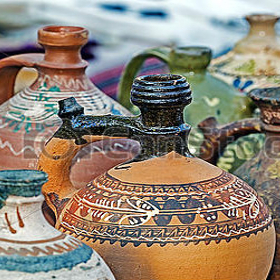
Date: 11:45 a.m. EST Tuesday, November 3, 2020
Speakers:
Bernard Koch (Sociology, University of California, Los Angeles)
Erik Gjesfjeld (Archaeology, University of Cambridge, UK)
Topic: Modeling the dynamics of cultural diversification
Abstract: The immense diversity of human culture presents one of the most conspicuous examples of cumulative cultural evolution. In the "Modeling the Dynamics of Cultural Diversification" tutorial, we introduce a suite of concepts and tools to explain the emergence, persistence, and extinction of cultural forms (e.g., art genres, technologies, organizations) over time. Our diversification rate approach allows the analyst to identify both major events and evolutionary mechanisms (e.g., competition, mass extinction) that have shaped the historical diversity of a cultural form. We find this framework useful for explaining long-term cultural dynamics where observed phenomena cannot be easily traced to individual-level mechanisms, and/or individual-level data may be incomplete. We demonstrate our theory and methodological approach through a study of the history of Metal Music over more than three decades, using a complete dataset of all bands active between 1968 and 2000. Over the course of its history, we find strong evidence that the genre has been fundamentally shaped by competition between ideas for the cognitive resources that actors can invest in learning about and reproducing this cultural form over time.
CES Learning Module description: Modeling the Dynamics of Cultural Diversification. This module trains researchers in a model-based Bayesian framework that allows them to estimate rates of cultural change, distinguish stochastic fluctuations from actual rate changes, and identify when major events, trends, or evolutionary mechanisms shaped the history of a cultural population.
Module designers:
Bernard Koch (Sociology, University of California, Los Angeles)
Erik Gjesfjeld (Archaeology, University of Cambridge, UK)
Michael Alfaro (Ecology & Evolutionary Biology, University of California, Los Angeles)
Jacob Foster (Sociology, University of California, Los Angeles)
Daniele Silvestro (Biological & Environmental Sciences, University of Gothenburg, Sweden)
Watch recorded webinar on the CES Modules YouTube channel.
Webinar slides (pdf)
Some questions posed by webinar participants (pdf)
- It seems to me that your definition of culture is lacking in that it doesn’t seem to include overall idea systems that prescribe culturally appropriate behavior.
- A place where there seems to have been a loss of diversity is in auto colors. Most today are black, white, silver or grey, with occasional blue or red.
- How about reproduction of ideas?
- Do lineages make up a cultural form, or are they the material and social manifestations of the cultural form as it exists in (has been indoctrinated into) individual minds?
- Is there a difference between the way you think about "lineages" and the way other cultural evolutionary theorists (e.g. Morin) think about "traditions"? How are those concepts similar and/or different?
- Erik & Bernard, in your study, which model of automobile changed the least / stayed stable the longest? (Like, say, sharks in biology) & does that mean its (that car's) cultural evolutionary niche stayed stable/viable? (or... were there other causal factors?)
- I wonder whether we can (or should) distinguish between cultural microevolution vs macroevolution in this case. Diversification, origination, and extinction can be applied to analyze both cultural variants within a population, as well as examine lineages and different cultures (as 'species')?
- How do you ensure the material cultural traits are mainly transmitted vertically and the evolutionary biology framework is applicable to these data?
- . Louca and Pennell (2020)'s simulation showed we cannot estimate extinction and diversification rates in phylogenies, and there is an infinite number of different sets of these two parameters that are equally good at describing any particular outcome. What do you think of these findings?
- Would this analysis generalize to other fads, fashion trends?
- Does this provide a predictive model?
- How might someone working in the history of ideas operationalize studying the growth and death of ideas? Must the study of ideas always be proxied through concrete material culture?
- The color changes are not properties of the individual lineages, they are general trends... how to fit it in the model?
Selected questions are discussed in the Q&A session at the end of the webinar.
Cultural macroevolution: Understanding the rise of large-scale complex societies in human history
Date: 11:45 a.m. EST Tuesday, November 10, 2020
Speaker: Peter Turchin (Complexity Science Hub Vienna and University of Connecticut)
Abstract: Over the past 10,000 years human societies evolved from "simple"—small egalitarian groups, integrated by face-to-face interactions, —to "complex"—huge anonymous societies with great differentials in wealth and power, extensive division of labor, elaborate governance structures, and sophisticated information systems. One aspect of this "major evolutionary transition" that continues to excite intense debate is the origins and evolution of the state—a politically centralized territorial polity with internally specialized administrative organization. Theories proposed by early philosophers and contemporary social scientists make different predictions about causal processes driving the rise of state-level social organization. I use the framework of Cultural Evolution and data in Seshat: Global History Databank to empirically test predictions of several such theories. In particular, I analyze how the evolution of specialized governance structures was affected by such factors as social scale (population, territorial expansion), social stratification, information systems, intensity of warfare, and the productivity of agriculture. These empirical results support the idea that a major evolutionary force explaining the rise of large-scale complex human societies, organized as states, was Cultural Multi-Level Selection.
Watch recorded webinar on the DySoC YouTube channel.
Some questions posed by webinar participants (pdf)
- Can evolutionary transitions happen in both directions and what happens if we go backwards, not forward?
- Was the basic early driver warfare, or was it the struggle for survival in a harsh environment (also a form of competition between groups)?
- You suggest that "the primary mode of competition ... was warfare." I am not so sure that other processes, such as disorganized occupation of territory for survival, forced migration without fighting, etc. played a major role. Warfare, of course, is the one best-documented.
- Agree about warfare perhaps not being an initial driver. That raises the question of when in history it arose. My guess would be around 10K ago.
- My guess regarding the rise of warfare as a driver is that when the first villages formed a division of labor arose between the better hunters and the agricultural workers, leading to a hierarchical structure arising in which the hunters also became defenders.
- If group selection is a form of multilevel selection, can we assign a dimension value to it that is related to the number of levels?
- Do your results on the spread of large scale societies replicate in the Americas? What percent of variance could be explained by an alternative model of diffusion (slow on land, faster on sea/rivers)?
- (a) - What do you think of Yuval Harari's Evolutionary History work (e.g. the book `Sapiens' 2015). (b) - Would it be possible, using your agent-based model system, to use the theory of CMLS, regarding how Homo sapiens (maybe?) wiped out / warred against, the 5 (or so) other contemporary species of humans/Homo approximately 50k years ago (e.g. the Neanderthals, Homo floresiensis, Denisovans, etc) ?
- What's your view on the work of David Wengrow and David Graeber on social complexity?
- Is there a systematic reason why you do not ask for decreasing size of polities after the 1940s? What is it about yardstick competition in which often small states like Singapore or Norway are role models?
- With governance, you start with all the societies as points on an 11-dimensional hypercube. It's not obvious to me that summing the dimensions is the best way to collapse this onto 1 dimension. Do the societies appear to fall on some small subset of the full hypercube?
- Is linear regression enough to explain the complexity of evolution in multiple systems and multiple scales?
- Was the average size of foraging bands constant over time before agricultural communities emerged? Is there evidence of warfare causing an increase in the size of foraging bands before agriculture emerged?
- Regarding the negative relation between government size and territory, does this potentially change or is it affected by the speed of information transmission?
- How might your model account for alternative forms of polities that don't necessarily rely on formal bureaucracy (or evidence of bureaucracy no longer survives), such as nomadic confederations/empires? And might a database that looks only at the rise of states be blind to understanding the range of human experiments in governance, including paths not taken?
- Is the argument that at a certain time hunter/gatherer groups came into increased conflict with each other, which increased the intensity of inter-group warfare?
- How does the database take into account differences in governance within the same polity, like differences between metropole regions and frontiers?
- Is it possible that competition is not required for biological or cultural evolution? Darwin pointed out that 'struggling against the drought' is not competition. Lewontin’s (1970) often-used description of selection explains that competition is not needed. If competition were only one type of evolutionary driving force, would it change anything in your models?
- Have you thought of treating natural disasters (major volcanic eruptions causing crop failures, years without summer, etc.) as natural experiments?
- Any comments on the NY Times article on civilization collapse that presented your views, but also critics and alternatives?
- How do you think about the ability to control spread of biological contagion? As population grows, the risk of pandemic disease increases. Are there societal structures that reliably do better or worse at containing the spread of disease (in the absence of antibiotics)?
- How do you deal with the difference between absence of evidence and evidence of absence - a particular problem for the earlier archaeological (and sometimes historical) record?
- It seems like the dynamics of cultural macroevolution are much different today compared to the period you've gathered data on (ancient to medieval). Are you interested in prediction, and if so could you elaborate a bit on the applicability of your conclusions to the modern world?
- Did the black death stress society more profoundly than any war?
- From your discussion, it seems to me like governance evolved to conquer rather than as a solution to human challenges. What is that driving ideology that has kept the evolution of governance?
- Considering the complexity of your causal relationships of interest: How did you come up with the correct (presented) model specification? (e.g. I was surprised to not see any interaction effects.)
- This might be a bit tangential, but I've always wanted to ask Peter what he thought of the premise of cliology in the science fiction novel In The Country Of the Blind (it inspired my PhD). More to the point, can this area of research not only help us to understand, but as The Evolution Institute has it, to improve the human condition?
- Nowak's equations on evolutionary cooperation include: Kin, Direct Reciprocation, Indirect Reciprocity (reputation), Network Recip. (neighbors), Group Selection (benefit/cost = 1 + (max group size / number of groups). 1) Frame for Kinship and Reciprocal Altruism? 2) Group selection seems to select for smaller group elites. Any thoughts?
- Do you think the rise of large-scale governments was inevitable? Is there something about human nature that causes human populations of a certain size to create polities? Or is it more of an intellectual endeavor / creation?
- Is economic productivity measured in your database? Isn't creation as important as destruction of stuff?
- You mentioned the importance of transmission of memories. Did you test this?
- Your data suggest wars (or preparations for them) look like a major engine of human/social evolution. But common sense is to avoid wars (even arms races) by any means as a major destructive factor of human/social development.
- How far can one push the analogy between biological and cultural evolution? Can one go beyond basic concepts like selection, competition and cooperation to more mechanistic principles?
- Shouldn't the doctrine of mutually assured destruction make warfare as a selection mechanism unviable for the future?
- How can cooperation be introduced to your models? It seems like a weak assumption to remove the evolved cooperative human nature when asking about the evolution of human societies.
Selected questions are discussed in the Q&A session at the end of the webinar.
The behavioural ecology of religious beliefs and practices
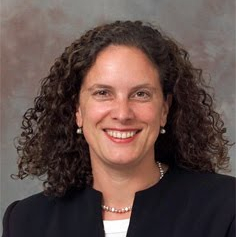
Date: 11:45 a.m. EST Tuesday, November 17, 2020
Speaker:
Ruth Mace (Evolutionary Anthropology, University College London)
Abstract: Cultural transmission of religious belief has been suggested as something that may underpin everything from large-scale cooperation to the emergence of institutions through multilevel selection. The tools of behavioural ecology are now also being applied to study the evolution of religious beliefs and practices. Here I review three of our recent studies which use different empirical approaches to examine the role of religious beliefs in driving human behaviours that appear costly to individuals, but may benefit the wider community. Our studies include both microevolutionary and macroevolutionary studies on charitable and religious donations, after-life beliefs and revolution, and religious celibacy. Although relationships are complex and may work through a number of pathways, we find little evidence in our studies that religious beliefs are ultimately driving the behaviours of interest. We do find evidence that ecology and kin selection can underpin apparently costly behaviours and even the emergence of institutions.
Some questions posed by webinar participants (pdf)
- What do you think of David Sloan Wilson's approach in his book Darwin's Cathedral ?
- Do you consider the distinction in motive for religious donations between divine punishment and reputation to be exclusive? What about other motives such as a belief that a religious institution is serving a public good?
- If religion is based on the cultural evolution of group-level traits, as Wilson, Smaldino and others have argued, and we can even identify phylogenetic trees, can we find replicators or heritable units which specify these traits?
- Could apocalyptic beliefs be associated with group extinction because the apocalypse never happens, and the belief is abandoned? (Though this would counter other findings that the lack of a world-ending event often leads believers to double down on their beliefs, e.g., they were spared due to their piousness.)
- Is the first or second son more likely to become a monk?
- When you're doing studies in China, how do you control for changes to family structures and historical disruptions to monastic life (most obviously the Cultural Revolution, but also ongoing political regulations)? Do you have to control for this by studying, say, Tibetan diaspora populations in India?
- Did you look at economic factors in households? — i.e. are wealthy households both more likely to be able to afford large families (their sons can have lots of kids) and they can afford to send one son to be a monk and support the monastery. So could monastic decisions be driven by competition for prestige positions among wealthy families?
- Are richer families (larger donations?) more likely to send a son to a monastery?
- These results look extremely similar to the modeling of the emergence of homosexuality through increased inclusive fitness: i.e. the non-reproductive sibling as a helper.
- To what extent do you think that your diagram of religious beliefs, ecology, and behavior may show circular causation rather than be simply linear?
- Isn't the time frame way too short for inclusive fitness to explain the phenomenon of celibate monks?
- The phylogenetic approach doesn’t work if the system is not neutral or if there is cultural migration or, as in the history of Gansu and neighboring Mongolia, there was a massive invasion by the Yuan empire about 900 years ago.
- How do you take into account the concept of Exaptation in that these roles may not be for the reason that you are ascribing or that modern society ascribes to them?
- Is the similarity between studying for a PhD and entering a monastery only superficial?
- This inclusive fitness matter for families with monks reminds me about the issue of gay brothers being more likely to occur in a family with a high number of male offspring. It looks like, among other evolutionary implications, there is this lowering of competition and perhaps presence of some special talents in that homosexual brother.
- How might the one child policy have impacted your results?
- Can the one child policy affect the long term tradition of having your son become a monk?
- How do benefits of female celibacy compare with male celibacy?
- Does the model re monks make any predictions about the practice? Or is it just a demonstration that the trait can be maintained evolutionarily?
- With regard to working through a tree of religious belief, are you familiar with the comedian George Carlin’s routine where he starts off saying he saw a man about to jump off a bridge and tries to talk him down, working through their similar religious beliefs until they finally get down to belonging to two very similar but distinct splinter groups?
- Do you think the monk's sisters would benefit more if inheritance were matrilineal?
Selected questions are discussed in the Q&A session at the end of the webinar.
The Impact of a tradition on the life of capuchin monkeys
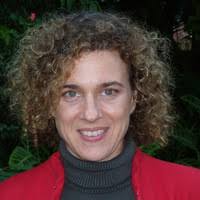
Date: 11:45 a.m. EST Tuesday, November 24, 2020
Speaker:
Patricia Izar (Experimental Psychology, Animal Behavior, University of Sao Paulo, Brazil)
Abstract: The EthoCebus long-term research on bearded capuchin monkeys from Fazenda Boa Vista, Piauí Brazil has advanced our understanding of tool use by non-human primates and of how traditions might affect biological processes. In a series of experimental studies we demonstrated that nut cracking with stone tools affects cognitive processes such as perception, attention, memory, and learning. In behavioural studies, we showed that nut cracking with tools substantially increases energy acquisition and affects social patterns of bearded capuchin monkeys. Nut cracking on anvil sites generates a high level of direct competition among group members, increasing the steepness of the female dominance hierarchy. In addition, nut cracking affects the properties of association networks of capuchin monkeys: connectivity is lower when monkeys are cracking and eating nuts on an anvil than when they are performing other activities. In conclusion, the tradition of nut cracking with stone tools is a pervasive influence on the life of this population of bearded capuchin monkeys. This tradition is currently at risk due to a growing expansion of commercial agriculture around the capuchin monkeys' habitat in the region of Fazenda Boa Vista. We urge for the inclusion of animal traditions in conservation policies.
Watch recorded webinar on the DySoC YouTube channel.
Webinar slides (pdf)
Some questions posed by webinar participants (pdf)
- Have you considered putting an accelerometer in an artificial stone to measure forces involved in food opening?
- Professor Izar, thank you for your talk. I know how hard it was to gather all those amazing research findings. Thank you for your enthusiasm. So, I’d like to ask you about the signs of tool use in archaeological sites. How can you tell the difference between human and monkey tool use signs in archaeological sites?
- How about the personalities of the capuchin monkeys? Have you already conducted any study related to their personality and tool use style? If not, can you tell about the relevance of a study of personality and tool use in capuchins?
- Wonderful talk! Do you think that female hierarchy is related with their performance in nut cracking?
- Do the monkeys use the tools only for feeding, or do they use tools for other purposes, like a war between groups? Or maybe mating?
- Is there any correlation between group size and the total number of traditions that groups have?
- Regarding ontogeny studies. Can you tell about the infants, perhaps the age when capuchin monkeys begin to use tools to crack nuts? Also, can you tell how the nut-cracking behavior began in those populations you study?
- Can you tell a little about the risks the capuchins face during the pandemic? Also, how do you plan to do the fieldwork with the capuchins in despite of the pandemic?
- How big do you think groups have to be for such traditions to be maintained?
- What is the relationship of the traditional local community with the capuchin monkeys?
- Congratulations on this brilliant and so informative talk! Do you think "nut cracking" generates a positive emotional state in the monkeys? Is there any evidence of affective processing alongside with the practice of this activity?
- I’m interested to hear whether the provisioning with water and coconuts has been observed to have any impacts on the communities. Relatedly, interested in knowing how the capuchins and local human communities interact. Is there provisioning? And have the agricultural incursions led to any negative interactions between the capuchins and humans. Thanks so much for your talk and research!
- You really convinced me about the role of nut cracking tradition on the development and social relations of the group, but I would like to see some more evidence of its effects on their evolution. Could you talk a little more about this?
Selected questions are discussed in the Q&A session at the end of the webinar.
For questions, please contact DySoc Director Sergey Gavrilets at gavrila@utk.edu.
Contact DySoC
Sergey Gavrilets, Director
403B Austin Peay
University of Tennessee
Knoxville, TN 37996-3410
PH: (865) 974-8136
FAX: (865) 974-3067
Email
Website: http://www.dysoc.org
DySoC is affiliated with The University of Tennessee, Knoxville
